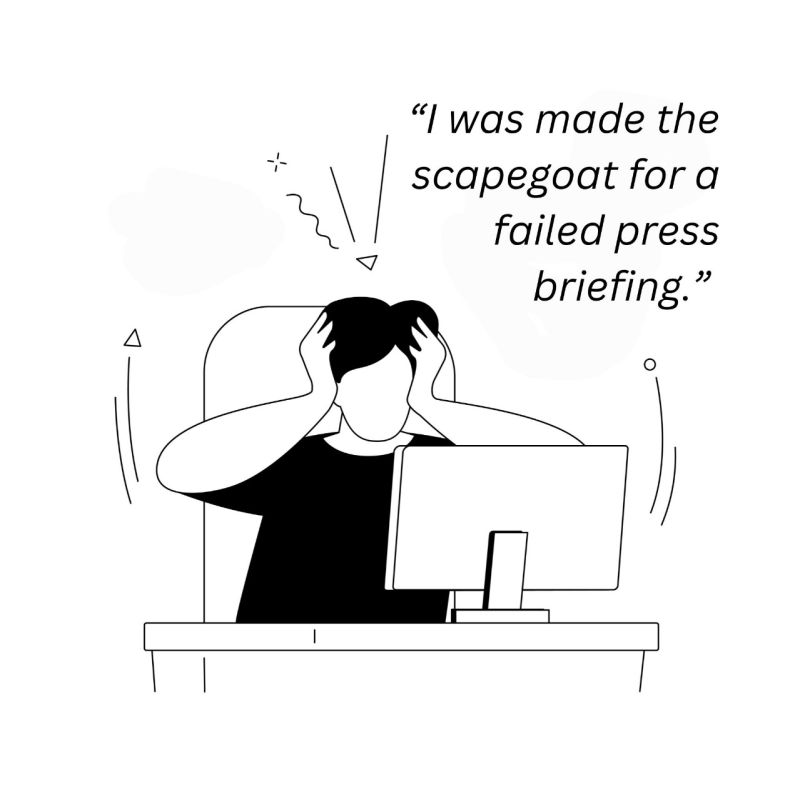Great Internal Communication Unpacked
Here’s Everything you need to know about Great Internal Communication!
This is a transcript from CPR’s insightful conversation with Internal Communication veteran, Ruth Musembi.
“
1. Internal communication is part of public relations. It’s part of our strategic communication.
However, either because of limited resources, perhaps the number of staff available in an organization or even agency and the number of staff they can deploy per client, maybe because of a lack of realization of how important it is, but for some reason, it’s never given prominence.
2. If you are to divide PR into two big parts, you’d have external communication, internal communication, almost 90% of the resources will be deployed to external communication.
Very few resources, whether it is budget, or human resource, will be deployed to internal communication.
So for internal communication, the first thing to start is acknowledging how the communication process works. Any good communicator should know that communication starts with granular audience analysis before someone creates a message or even decides the channel, or the best messenger. They need to think of:
3 “Who am I going to talk to?”
At a very top level, you are going to have three primary audiences, maybe four.
There will be i) Board members, ii) the top management, iii) the middle level supervisors, and iv) employees v) outsourced workers who are always forgotten but who have a way of damaging the reputation of an organization or building it; for example, in some banks, the first person you meet at the entrance is an outsourced security person. If there’s something that has changed in that bank in the last day or two, this security personnel needs to be informed, “When people come tomorrow, this is what you are going to tell them.”
4. As for board members, they are not day-to-day, but there are members of that organization. They form an internal public.
If I’m in charge of communication in an organization, I need to ask myself, “What are the Information needs of the middle level supervisors? What are the information needs of employees? And what are the information needs of the top management?” Never mind the top management are the ones who make decisions, but then they need to hear from the rest of the organization.
5. We analyze audiences first because we believe the message is not going to be structured the same in terms of content, in terms of complexity, in terms of how we deliver the message, among other considerations.
After that, we do stakeholder analysis. I came up with my own model, which I use for both internal and external communication. I call it the Nice Model.
6. N means NEED. Information needs. We need to know what top management needs to know, what middle management needs to know…. What each internal stakeholder needs to know.
So don’t give me information I don’t need and fail to give me the information I need. And how you will know that is by talking to me. You cannot think or guess for me.
7. There is no communication without research. However basic that research will be. Run a quick audience analysis, say, “for frontline employees, this is the information they are interested in getting and every other internal stakeholder.” Have your table. Research is another name for listening. My belief is that listening has to be continuous.
Never decide which channel works for them. Part of the analysis you have to ask them is what channels they use more and what they prefer… the way we do internal communication audits.
8. That should be enough for that because it’s the same process we use for communication anyway.
My main challenge with internal communication as practiced right now is that it is mainly information dissemination.
People are saying they are doing internal communication, but they are doing broadcasting. They are doing information dissemination. You are still going back to the public information model of the four models of PR.
So the press agentry, which is very bad because it has all the elements of lying, manipulation and also a lot of people don’t practice that. The second one is public information. You just inform people.
9. So most people doing internal communication are still acting like internal journalists. They move from department to department, or from one manager to another, collect this information, then package it, say in a very nicely designed flier, newsletter, poster etc., they publish on the notice board or email or disseminate and then they say they have communicated. It is all information dissemination.
10. So where are the gaps? There are two things:
There are seven elements in the communication process that we all learned in class. I collapsed them into three.
The seven elements are audience, message, messenger or source, channel, feedback, contexts and noise (barriers of communication).
I collapsed the seven elements into three and formed what I call a communication triangle.
11. I’ve told you of two of my inventions; the NICE Model which is a stakeholder/audience analysis model. And then I have the communication triangle.
In the communication triangle, I say that anybody who is saying they are communicating effectively; they need to do three things. My mentor Jim McNamara talks about two things. I added a third one.
McNamara talks about listening and the pandemic of organizations that don’t listen. He argues that there are two sides to the coin in communication. Half of it is “speaking”. The other half is listening.
I critiqued him and said, “No, they are three. Not two.”
12. The first side of the triangle is “speaking”, which is information dissemination. Which means in the communication triangle, every organization must make sure they are sharing information. That is “speaking” (It can also be writing). This, I agree with McNamara. So there with Jim, we are in the same place and with every other person.
13. The second side of the triangle is “listening”. Here, there’s an organizational listening crisis because organizations don’t listen. They just give, give and give information, and that is the ones who want to give. Most of them don’t even give the information in the first place.
14. But then, my third corner of the triangle is a behaviour/actions?
Whether you want to start with nonverbal communication, and then you come to what actions do leaders take whenever they communicate…
For example, we got to our staff meeting. The Managing Director comes and says, “Anyone with a comment or anyone with something to raise?”
15. Two, three people raise their hands and say, “Boss I think we need to start reporting at 8:30am. Or we want to start coming to work at 7:30 so we can leave at 4:30pm.”
Or whatever other recommendation they give.
And then the MD stands and says, “Yes, those are very good ideas. I’m going to look at them. And I’m going to come back to you.”
16. Or, “Boss, here people are being promoted in a very haphazard way. Some of us came a long time ago, we’ve never been promoted. Some people came the other day and were promoted. We don’t understand how this is done.”
And then the MD stands and says, “Okay, from now on there will be a very clear criteria. Those who came first will be promoted first” or “I’m going to come up with our guidelines. And I’m going to share in the next two weeks.”
Now that is where behaviour/action comes in my other corner of the triangle.
17. Two weeks, nothing going on. One month, nothing! Two months, to our shock…new promotions happen, and they are not following what the employees requested. People are still being promoted as haphazardly as before the employees spoke.
What do you take from that? Actions speak louder than words.
18. You can tell me what you want until the cows come back home. But if what you are doing is negating what you are saying, which one do you think I’m going to follow? I’m going to follow what you are doing. Not what you are telling me.
Anyone who is doing internal communication, they have to zero in on these two areas of Listening – Leadership behavior/Actions and Nonverbal cues. But not just the nonverbal cues we know from our communication class. Is what you are saying in line with what you are doing?
19. One of the roles of a communication person is to advise. We are supposed to counsel. The way lawyers call themselves legal counsel, we should be calling ourselves Communication Counsel. And I know abroad that title is used.
It means then that we need to be able to talk to the leaders and tell them, “Listen. First, let’s share as much information as is needed. And how we will know what is needed is by asking these people. And we need to do that quite often. Let us listen to them and create avenues for feedback.”
I came up with what I call a virtual suggestion box. Research is another name for listening. My belief is that listening has to be continuous. That is why I came up with that virtual suggestion box because it allows for continuous listening.
20. In the usual order of things, when things were analog, we would see suggestion boxes around the compounds. The assumption would be that people will go pass by and put their suggestions in there. Of course we know they don’t for many reasons and one is still the behavior of leaders because if you come to a staff meeting and tell us, “Now we have installed suggestion boxes in Blocks A and B, please feel free to put in your thoughts, ideas, complains…anything, and we will look at them.”
You go ahead share your complaint idea… suggestion… there. Then you never hear from anybody. With time those boxes become very useless.
21. I was training somewhere and somebody said the reason they don’t use the suggestion box is because there is a CCTV camera right where the suggestion box is.
I told them, “Maybe it was inadvertent. Maybe they didn’t even think about it.”
They said, “No, I think it is very deliberate. They want to see who put something, and then they quickly go grab it. So even though they wanted to be anonymous, it is not anonymous.”
And even the way the employee satisfactions are designed, no clever employee will ever give an honest answer because if, for example, we have four departments, and in the survey, you ask employees to indicate personal details like their position, gender, department etc.
22.“If I am a manager, I’m called Ruth. And my department is communication. I don’t need to say Ruth. I just need to say department, communication. Gender, female. Year of reporting 2009. You’ll just know this is Ruth with all these crazy ideas.”
The reason I thought of a virtual suggestion box is because we need to keep hearing from employees. But the way I’ve designed mine is that it is always on. I designed mine to mimic the one that used to be available on the corridor where employees can drop suggestions any minute, and as many suggestions as they want.
23. My concern with how internal communication is being done now is one. It is not beginning where communication ought to begin:
- Map the audience and analyze them
- Plan the communication for each
- Implement
Evaluate. Here, you are not just measuring impact, you are measuring outcome and impact
Output is just counting. We had two meetings; we did four magazines [yada yada]. It is a very basic form of evaluation. In fact, it is a monitoring aspect.
Outcome is based on the three objectives we use for communication:
- Awareness increasing
- Attitude change
- Behaviour change.
24. Impact is tied to organizational objectives. There has to be an organizational goal that you can tie to your work. For instance, when the employees are more informed, do they become more engaged? And then do they become more productive as a result of increased engagement? Demonstrate how by communicating extremely well internally, there was impact created. That is why impact is not immediate, because it takes time for you to draw and even from a scientific point of view, you will have to show whether you were the one behind the impact or whether there were other factors.
“
–
Ruth Musembi is Associate Managing Partner at Hill+Knowlton Strategies. She is a Certified Transitions & Progress Coach






Leave a Reply